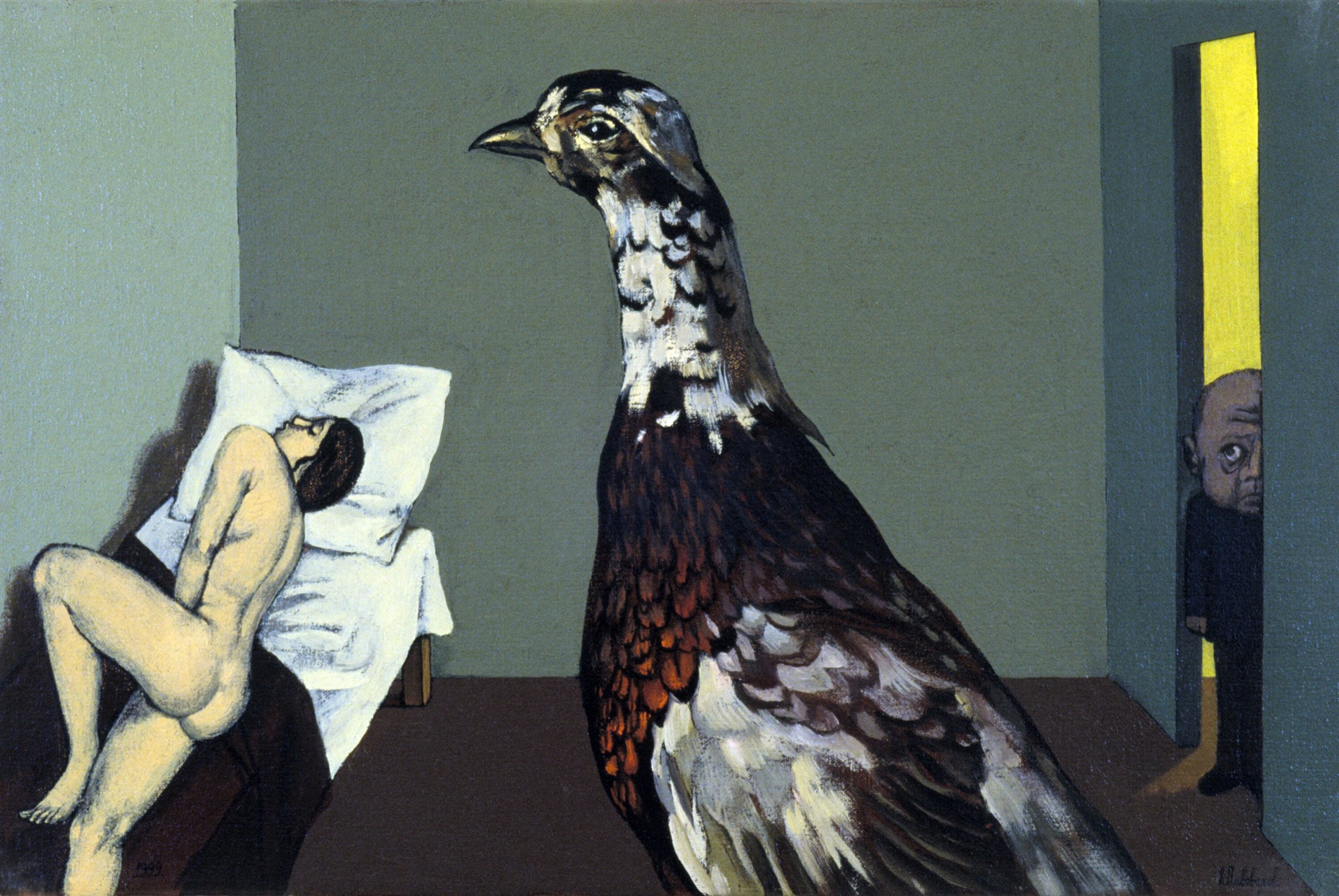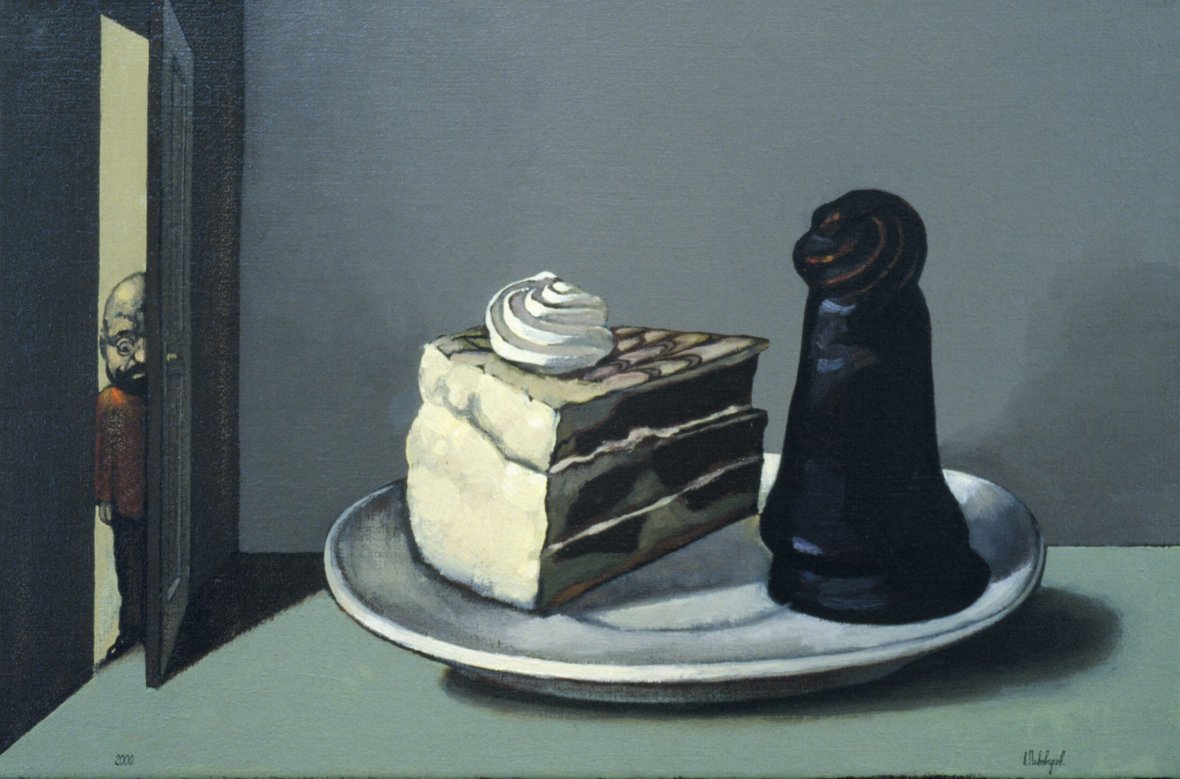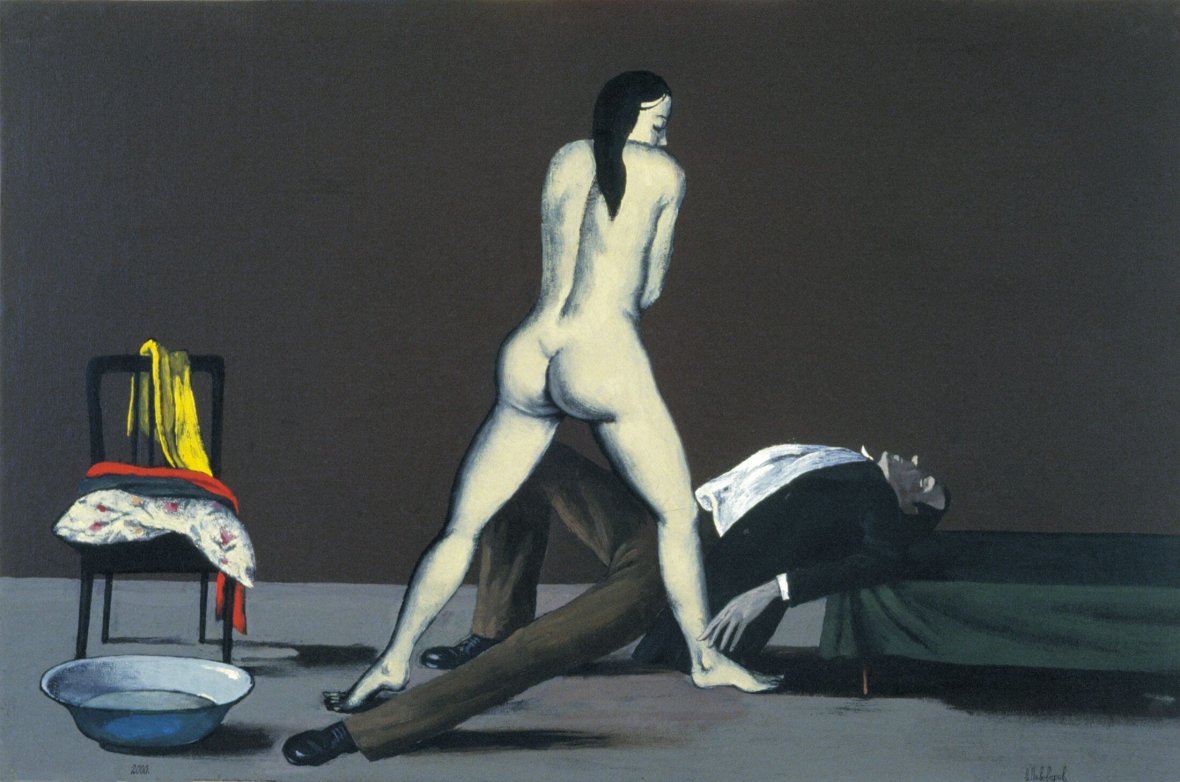Pivovarov Viktor
Dark rooms

Viktor Pivovarov has finished his autobiography with the chapter titled “Dr. Freud’s Couch”. This chapter is devoted to his contemplation about realism and “does this seemingly waste method still own some hidden potential or it is a wooden bicycle from museum”. And he comes to conclusion that there’s a good chance to move back (forward?) to realism, try this wooden bike for a ride.
That is why the artist invites realism into the series of paintings titled “Dark rooms”. Realism here is subject to analysis, as if a patient at the analyst’s office. The analyst is the artist himself, who tests and examines realism of his works with the Freudian “thesaurus” (an almost unimaginable set of characters from the dreams, multilayered stories, erotic scenes, animals, literally rendered indecent idioms – all sort of psychological rebus).
Pivovarov feels akin with Peter Bruegel's method since «having ascended to the nephrite heaven and tasted nirvanic honey, he voluntarily went down, to the very simple and everyday, and even deeper to the darkest and scariest…», but doesn't loose the great sense of beauty. The artist submits his works to the same procedure. Like Freud, Pivovarov forces the «darkest and scariest» to get out, and thus treat the patient.
Realism is tested with the treatment for senility. Pivovarov employs Freudian method of the free associations, as a basic psychoanalythic therapy. In this case the artist becomes both patient and analyst, allowing us, his confidential witness-viewers, to pry into the ajar doorway and judge the effectiveness of the treatment.


